The Master’s Voice Carries On: Paco Rabanne Fall/Winter 2023 RTW Collection
Less than a month after the trailblazing designer passed away, Julien Dossenna’s newest Ready to Wear collection for Paco Rabanne was a shimmering hommage in metallics and metals
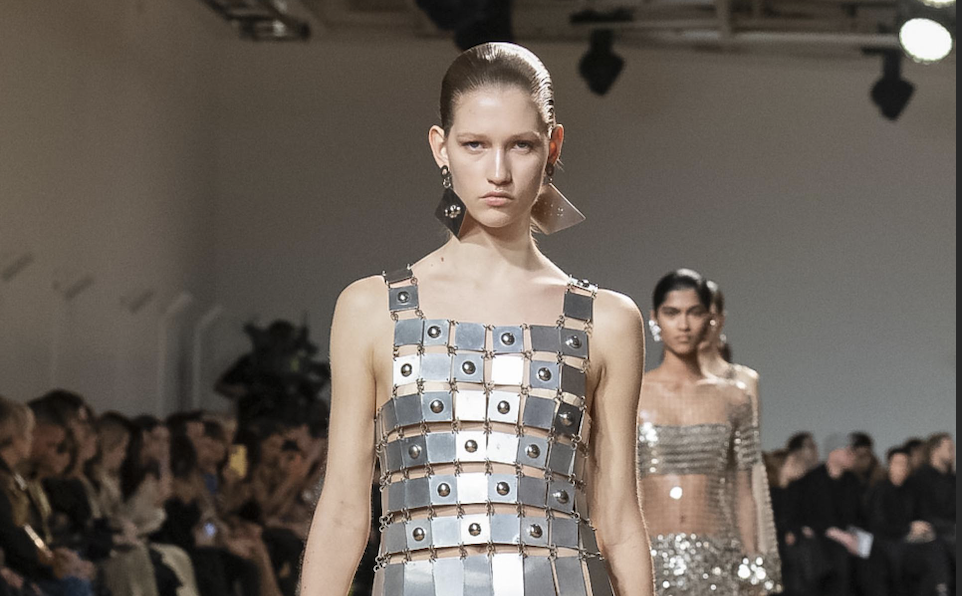
“You were among those who changed our view of the world” read a letter written to the late Paco Rabanne by Julien Dossenna, the Creative Director of the brand since 2014. Paco Rabanne debuted their FW23 Ready to Wear line in Paris today, the first collection that has been shown by the brand since the founder and namesake passed away in early February. Despite the bountiful color and playful styles present in the forty-four look collection, there was a palpable sense of grief lingering in the air. Upon founding the brand and presenting its debut collection in 1966, Paco Rabanne made it intensely clear to the fashion world that he was already a force to be reckoned with. He immediately caught the attention of the entirety of the fashion world, holding them on pins and needles waiting to see which metal or plastic he would mold into a futuristic dress or bathing suit next.
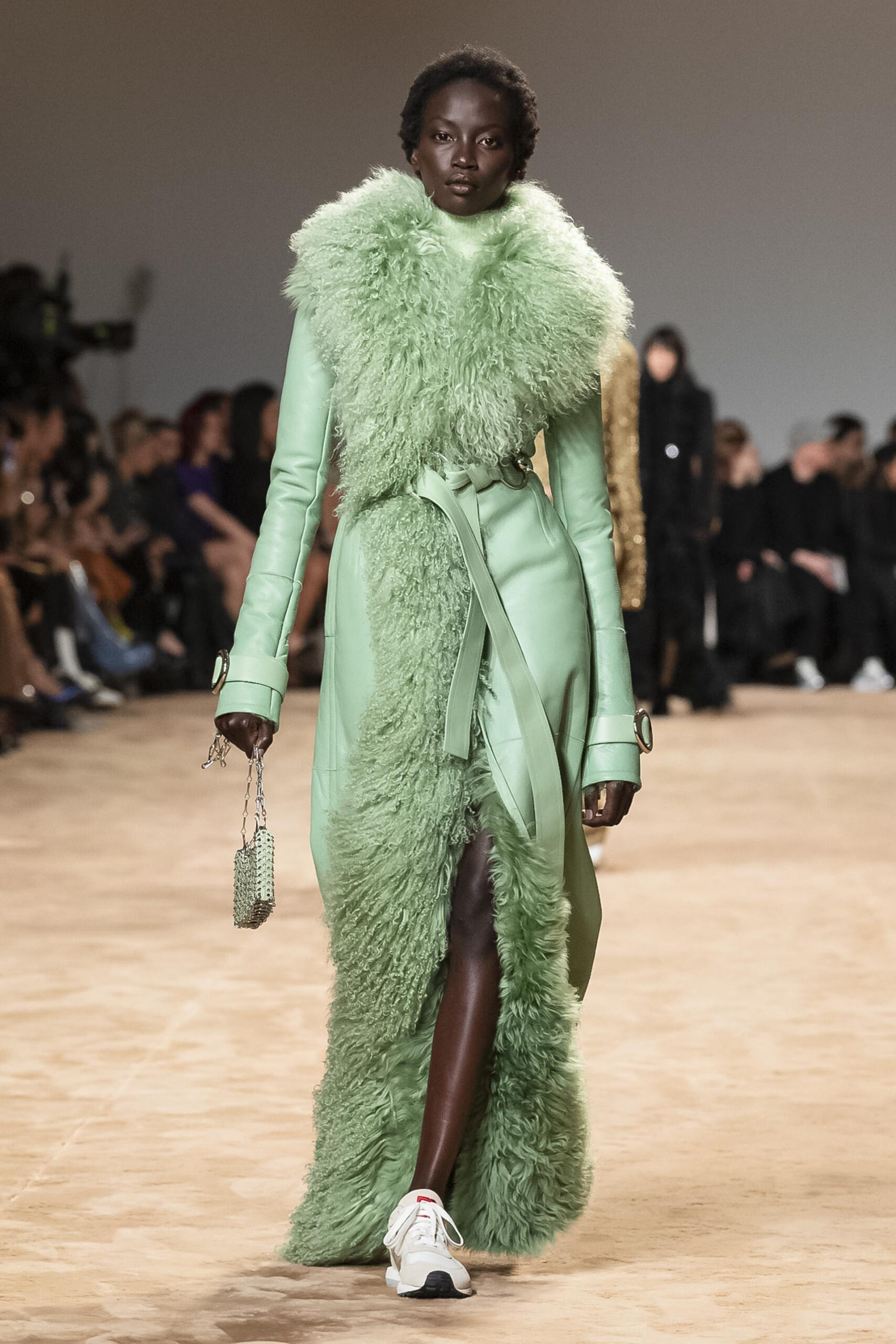
A minimal, beige carpeted runway allowed the clothes to speak for themselves, and speak they did. The collection pieces were sent down the runway in visually distinctive groups that almost made them seem like subcollections within the larger one. The first models down the runway donned simplistic silhouettes and muted colors, mainly blacks, browns, and beiges. The slouchy trousers and clean-cut tops were offset by subtly extravagant additions of feathers, fur, and bows. After easing the audience into the collection with a more muted selection of looks, the next group of models sent down the catwalk kicked the show into high gear.
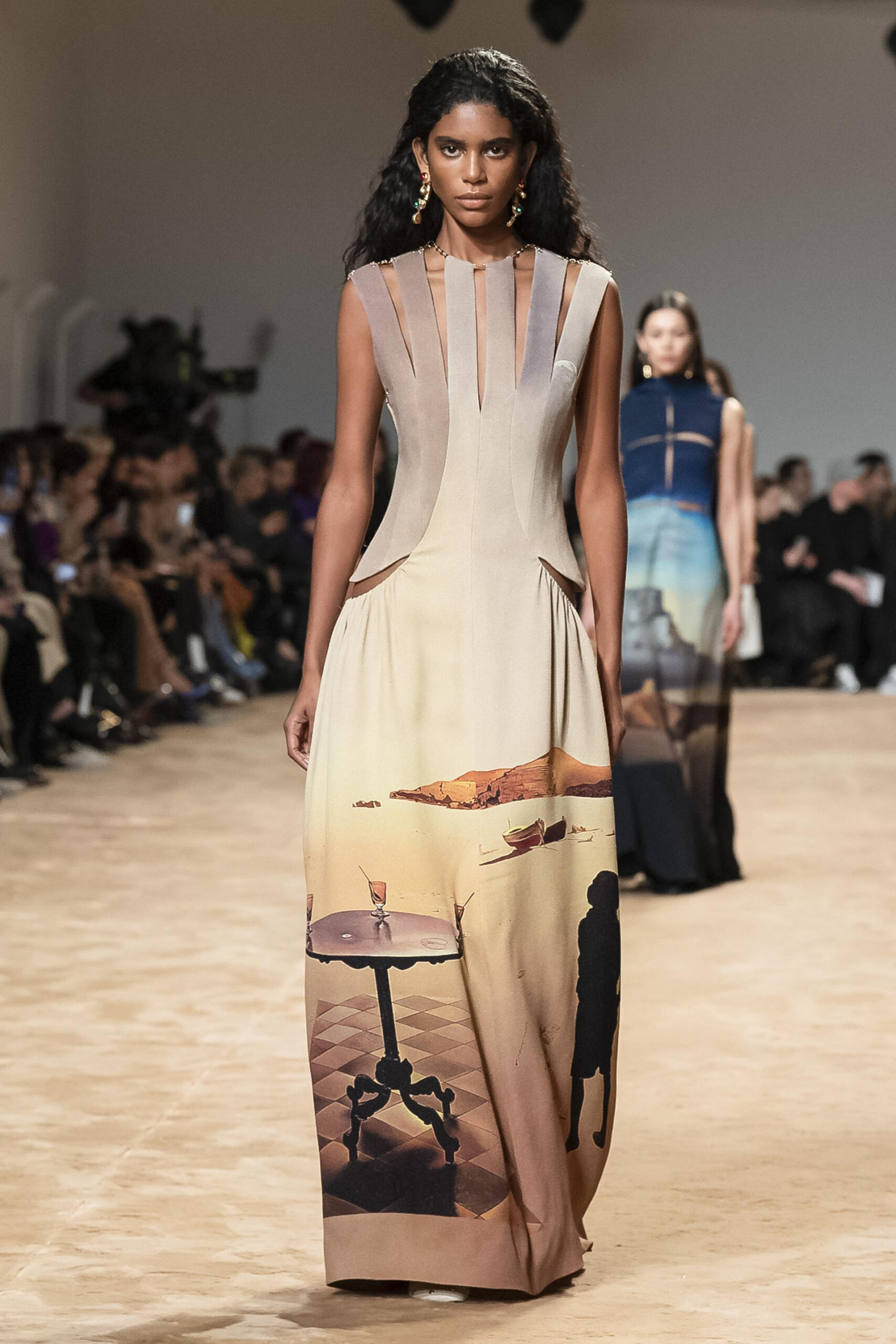
A series of floor-length dresses in an assortment of unapologetically loud prints and colors swooped in and shifted the tone of the show immediately. A variety of necklines, ranging from deep V to high neck, add a sense of antiquity to the dresses and somewhat offset the boldly modern patterns and color palettes. The collection then transitioned into sleek, satin floor-length gowns, all with similar ruching around the chest, but all adorned with different embellishments.
Then the presentation got really, really exciting, cranking up the surrealist and futuristic themes that gained Rabanne his acclaim way back when. A series of five dresses, all printed with scenes from Dali paintings, including The Shades of Night Descending (1931) and Sun-Table (1935), courtesy of the Fundaoci Gala-Salvador Dali, were sent down the runway. Artful yet subtle cutouts added a layer of texture and visual intrigue to the already plenty of exciting pieces.
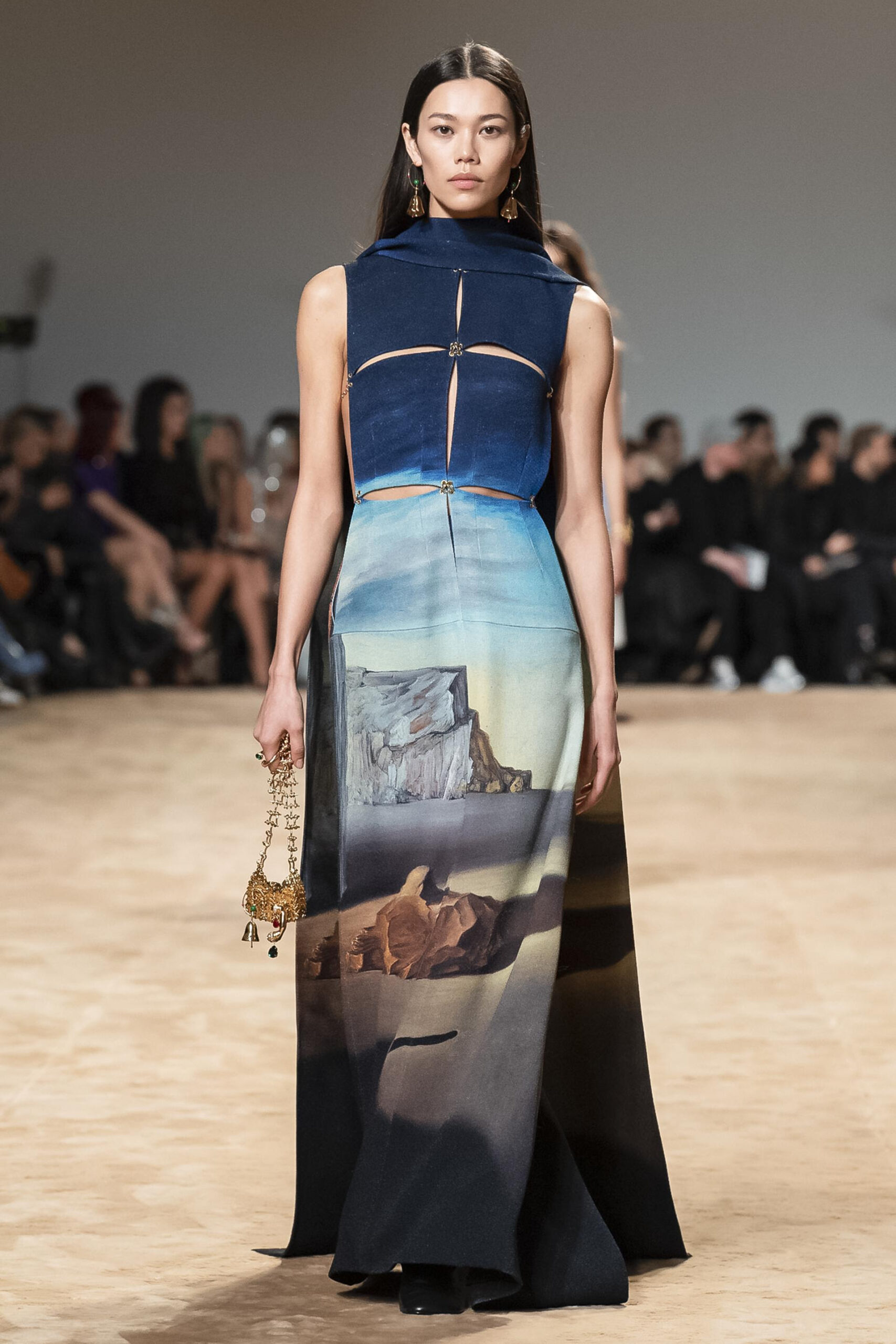
And then came the big show-stoppers. This was also when the show turned into an auditory experience for the audience. The last nineteen looks in the collection were Paco Rabanne at its absolute best. A succession of three garments with fringe skirts made of a pseudo-metal that audibly swished down the runway were presented first. One in pink, one in silver, and one in gold, the garments are purely awe-inspiring. Videos from members of the audience pick up a satisfying clinking together of the fringes as the model struts past.
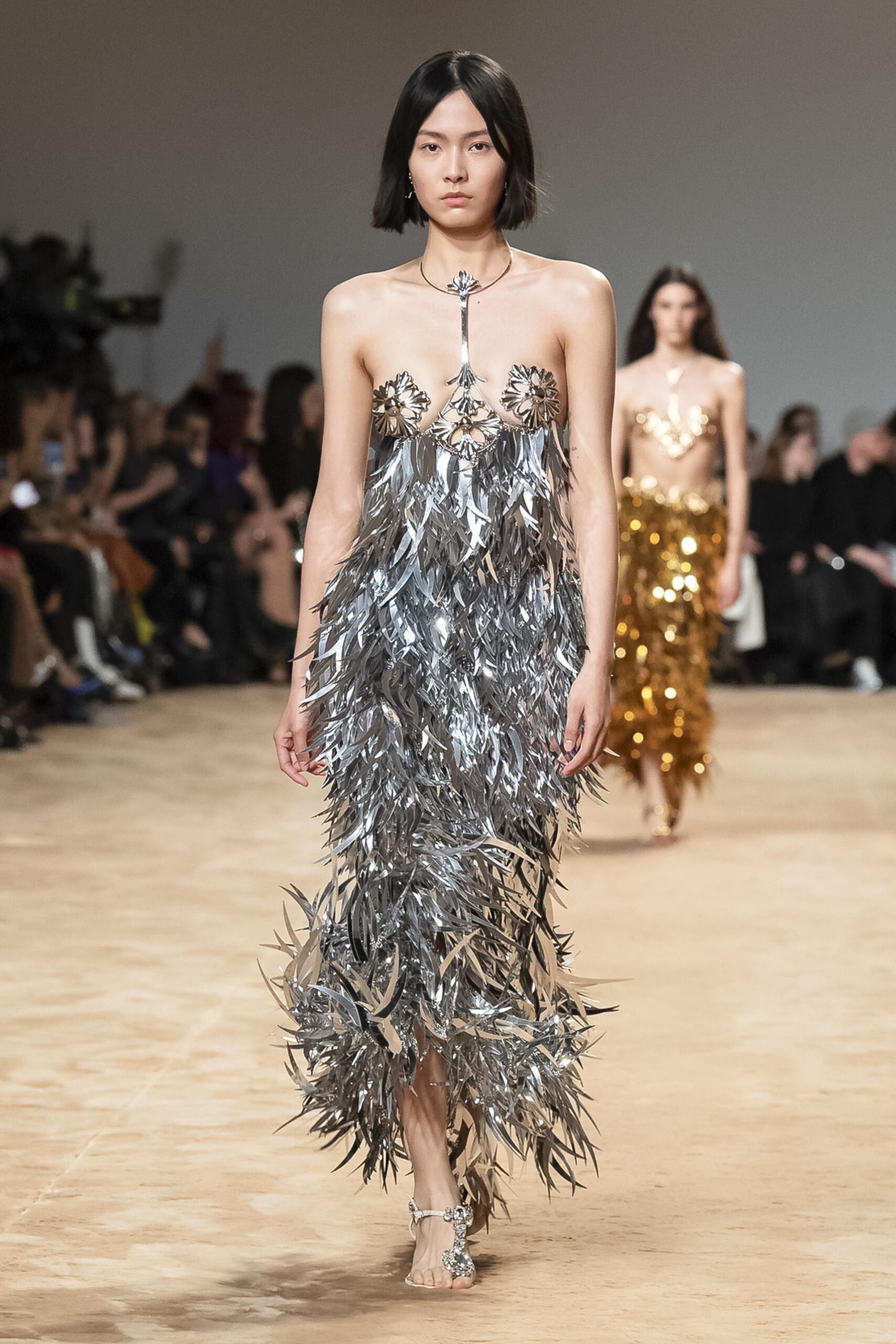
More noise was to be heard when two dresses with metal mesh caging accentuated with discs of a material that appeared almost glasslike were sent down the catwalk. Impressive and meticulous fringe work was to follow, models shimmering as they moved in a metallic mirage. The final seven looks were a full-on archival revival. Rabanne originally drew attention to himself as a designer by creating ‘unwearable’ dresses and bikinis out of panels of metal. Dossenna chose to take a page from the master’s book for the final looks in this collection, reworking the simplistic metal dress from decades past into more intricate, modern designs.
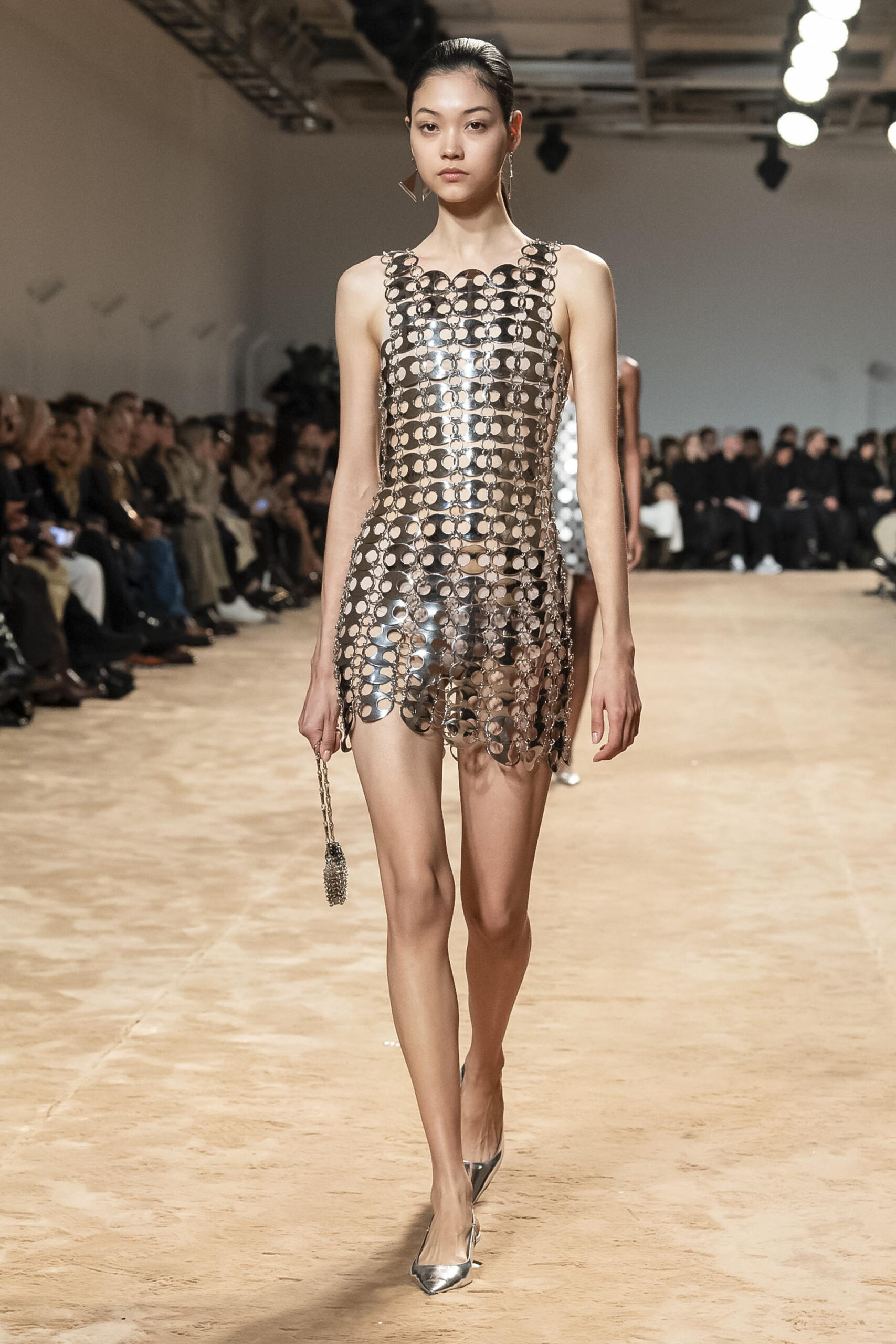
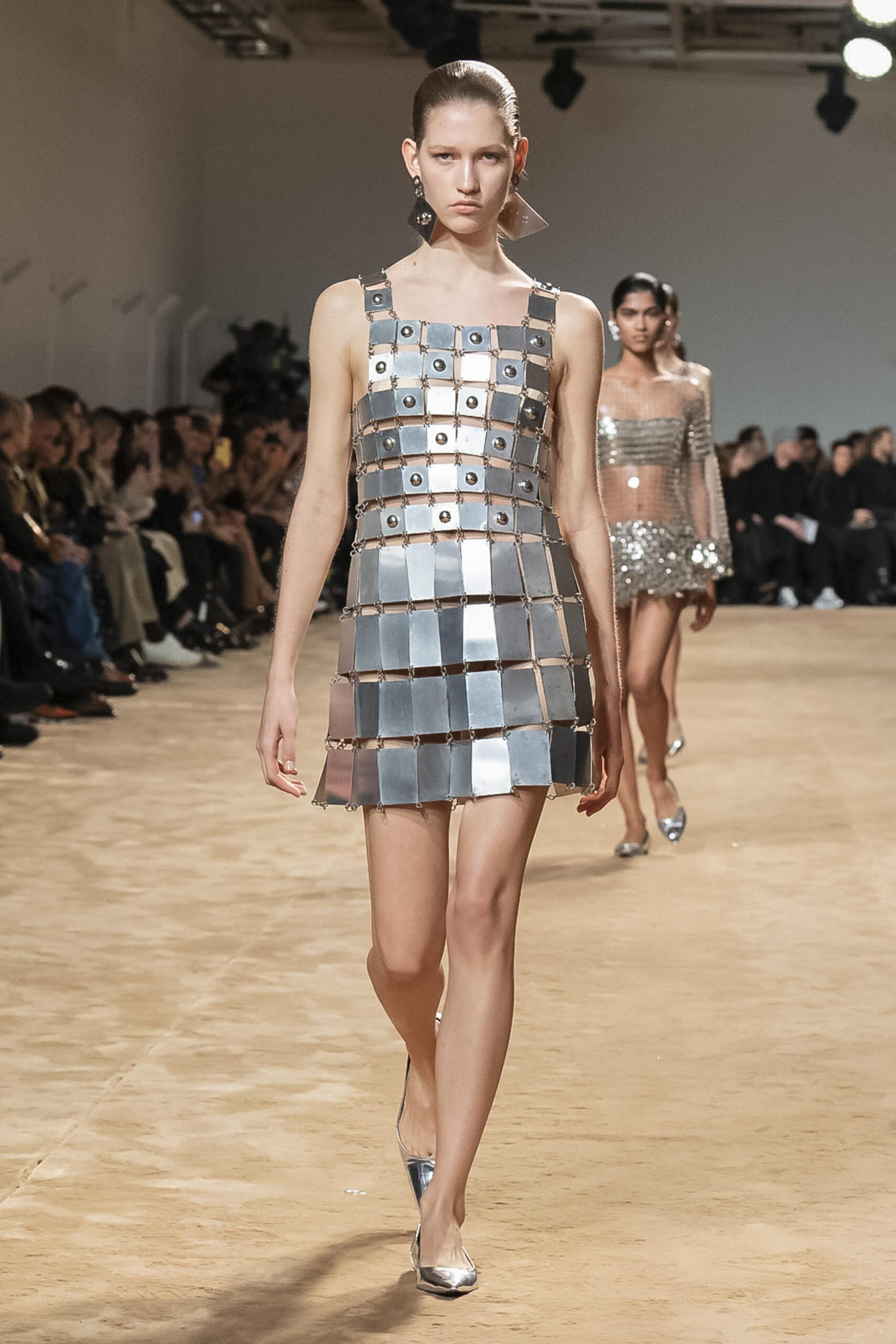
Seven mini dresses may seem like an odd way to pay homage to a Spanish-French man, but in this case, it could not have been more appropriate. Paco Rabanne was an asteroid of talent in the fashion industry, and Julien Dossenna has proven that he is fully capable of keeping alive the themes and designs that launched the brand into space all those years ago. Shortly before he passed, Rabanne wrote, “You can’t be a designer of the future because the future doesn’t exist. I believe I am a contemporary fashion designer. I work for contemporary fashion, with contemporary techniques, with contemporary materials. The future? I don’t know what it is.” The future is always unclear, but Paco Rabanne’s legacy has been proven to have a place in it, no matter what it is.
Discover More
